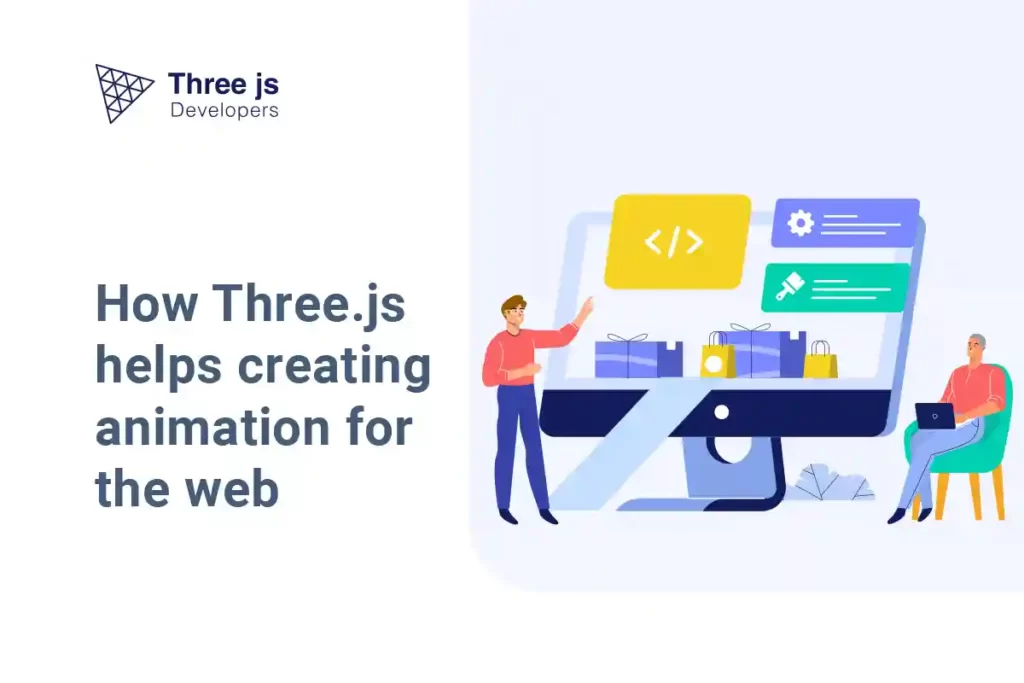Three.js is an impressively flexible and potent JavaScript library designed to create and control 3D graphics within a browser environment. Leaning on WebGL, this pioneering tool has democratized 3D animation, providing a pathway for developers to create stunning visuals and interactive experiences without requiring exhaustive knowledge of 3D modeling.
The Importance and Role of Three.js in Web Animation
The interactive graphics and animations achievable with Three.js have become indispensable to modern web development. The capacity to create immersive, dynamic, and visually enticing 3D experiences on a website not only boosts the aesthetic appeal but also dramatically increases user engagement. This enhanced level of engagement often correlates with an uptick in user retention and improved conversion rates.
Three.js offers developers a comprehensive set of tools for 3D modeling and a high level of customization, making it an essential asset in the repertoire of a modern web animator. Its adaptable nature means it can meet many needs and requirements across diverse projects.
Real-World Applications of Three.js
The real-world applications of Three.js are as vast as they are inspiring. High-profile organizations like The New York Times have employed Three.js to create engaging, interactive data visualization pieces. By representing data in a 3D interactive format, complex narratives are brought to life, simplifying the storytelling process, and improving user comprehension and engagement.
On the gaming front, Three.js has been instrumental in developing popular browser-based games like ‘Crossy Road.’ Its compatibility with VR and ability to generate high-quality 3D graphics have pushed the boundaries of web gaming, demonstrating its potential for creating immersive gaming experiences.
How Three.js Works for Creating Animation
Creating animation using Three.js involves understanding its fundamental concepts and following specific steps to generate motion. This user-friendly framework simplifies complex animations, making them accessible to developers.
Basic Concepts in Three.js
Three.js, a robust JavaScript library, relies on key concepts that allow the creation of engaging animations:
- Scene: The Scene in Three.js serves as the stage for your 3D objects. It’s a container that holds and keeps track of various elements, including lights, objects, and cameras. All these elements interact in a defined space, making your 3D objects come alive.
- Camera: The Camera dictates the viewer’s perspective within the scene. It frames what the user can see and how they see it, defining the viewpoint from which the scene is observed. In Three.js, various camera options like PerspectiveCamera and OrthographicCamera offer a unique visual effect.
- Renderer: The Renderer is pivotal in generating the final image the user sees on their screen. It translates the Scene and Camera data into a format that the system can understand and display.
- Geometry and Material: These are the building blocks of 3D objects in Three.js. Geometry represents the shape of an object, while Material dictates its visual properties. The combination of various geometries and materials provides the fine details that make each 3D object unique and engaging, and thus, the animation.
Steps to Create an Animation with Three.js
Creating an animation with Three.js involves a sequence of steps that utilize the above concepts:
- Initialization: Developers first set up the Scene, Camera, and Renderer. They define the physical space (Scene) and viewer’s perspective (Camera) and choose the appropriate renderer based on the application requirements.
- Defining Objects: Next, they define Geometry and Material and add them to the scene. There is an array of geometric shapes and material types at developers’ disposal within Three.js. Shapes like BoxGeometry, SphereGeometry, and CylinderGeometry, combined with materials such as MeshBasicMaterial, MeshLambertMaterial, or MeshPhongMaterial, allow for an extensive variety of 3D object creation.
- Creating Motion: A render loop is implemented to animate these objects. This function continuously updates the scene and renders it from the Camera’s viewpoint. The objects’ positions or attributes can be modified in each iteration of this loop, providing the illusion of movement. We perceive this continuous sequence of slightly varying images as an animation.
Advantages of Using Three.js for Web Animation
Three.js offers significant advantages in web animation, including versatility, scalability, and cross-platform compatibility, enabling it to handle complex projects. Its open-source nature further allows a rich, active community to contribute, driving the library’s continual evolution and advancement.
Versatility and Scalability
Three.js stands out for its versatility and scalability, two paramount features in web development. Three.js, with its plethora of tools and features, provides developers the capability to construct simple 3D models or intricate, immersive Virtual Reality scenarios. The library scales beautifully to accommodate projects of any size or complexity. This flexibility allows developers to tailor their projects to meet diverse specifications and requirements, thus positioning Three.js as a versatile and adaptable tool in 3D web animation.
Moreover, Three.js’s scalability extends beyond the scope of individual projects. As developers enhance their skills and take on more complex tasks, Three.js continues to support them with advanced features and functionalities. Its intuitive design promotes gradual learning, making it as suitable for novices experimenting with simple animations as for seasoned developers crafting intricate 3D worlds.
Cross-Platform Compatibility
Cross-platform compatibility is vital in today’s digital era, where users interact with the web through various devices. Here, Three.js delivers exceptionally well by ensuring animations function seamlessly across various devices and platforms. Whether a user is on a desktop PC, a mobile device, or a VR headset, Three.js allows for smooth, uninterrupted interaction with 3D animations. This high degree of compatibility translates to more engaging and accessible experiences for users, no matter their device of choice.
This accessibility goes hand in hand with the library’s emphasis on performance optimization. Three.js is engineered to maximize rendering efficiency, allowing for smooth, high-quality animations even on less powerful devices. This commitment to performance and extensive cross-platform compatibility ensures that 3D animations powered by Three.js can reach a broad and diverse audience.
Rich and Active Community
Being an open-source project, Three.js boasts a thriving, active community of developers. This vibrant ecosystem fosters an environment conducive to learning and collaboration. Developers can readily access many resources, such as documentation, tutorials, and code examples, enhancing their understanding and proficiency with the library.
Moreover, community support extends beyond educational resources. Developers can tap into the community’s collective wisdom through forums and discussion boards, receiving advice, feedback, and solutions to their queries.
Additionally, the community actively contributes to developing and refining the Three.js library. This active participation ensures that the library stays updated with the latest advancements in web technology, continually expanding its capabilities and features to cater to the evolving demands of 3D web animation. This strong backing from a global community ensures that Three.js remains a cutting-edge tool in web development.
Conclusion
As we move further into the digital age, Three.js continues to shape the future of web animation, bringing exciting advancements and limitless possibilities. Three.js’s capacity for crafting engaging, interactive online experiences position it as a pivotal force in the evolving landscape of web design and development.
FAQs
What is Three.js used for?
Three.js creates and displays animated 3D computer graphics on a web browser. These features find utility in diverse scenarios, ranging from designing interactive graphics and gaming to data representation and crafting virtual reality journeys.
Is Three.js hard to learn?
The learning curve for Three.js depends on your prior knowledge of JavaScript and 3D concepts. With a solid foundation in these areas, Three.js can be quite approachable. There are numerous resources and tutorials available online to support learning.
How do I start with Three.js?
Starting with Three.js involves understanding its basic components like scenes, cameras, geometries, and materials. Refer to the official Three.js documentation or utilize online tutorials to learn these concepts and create your 3D animations.



